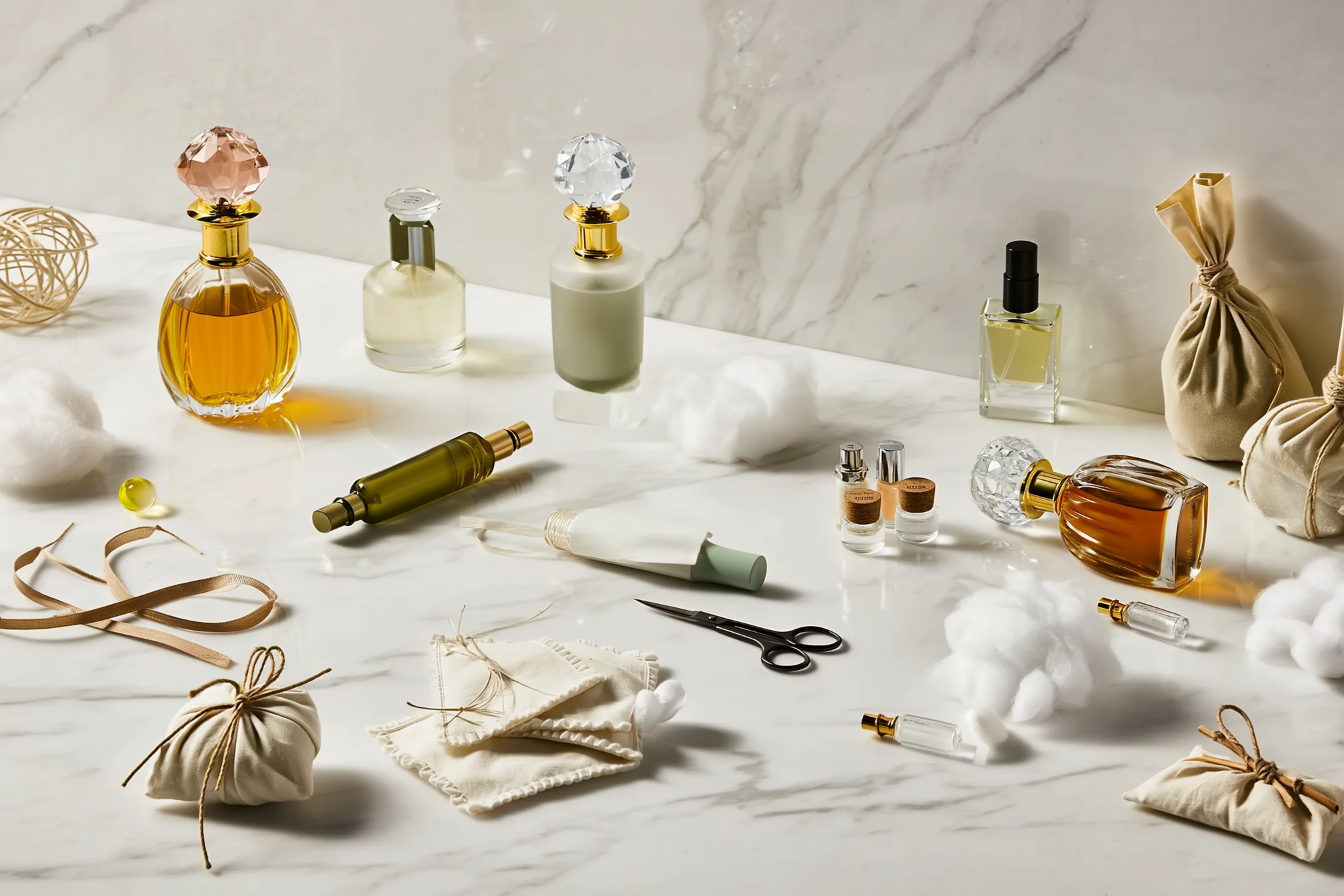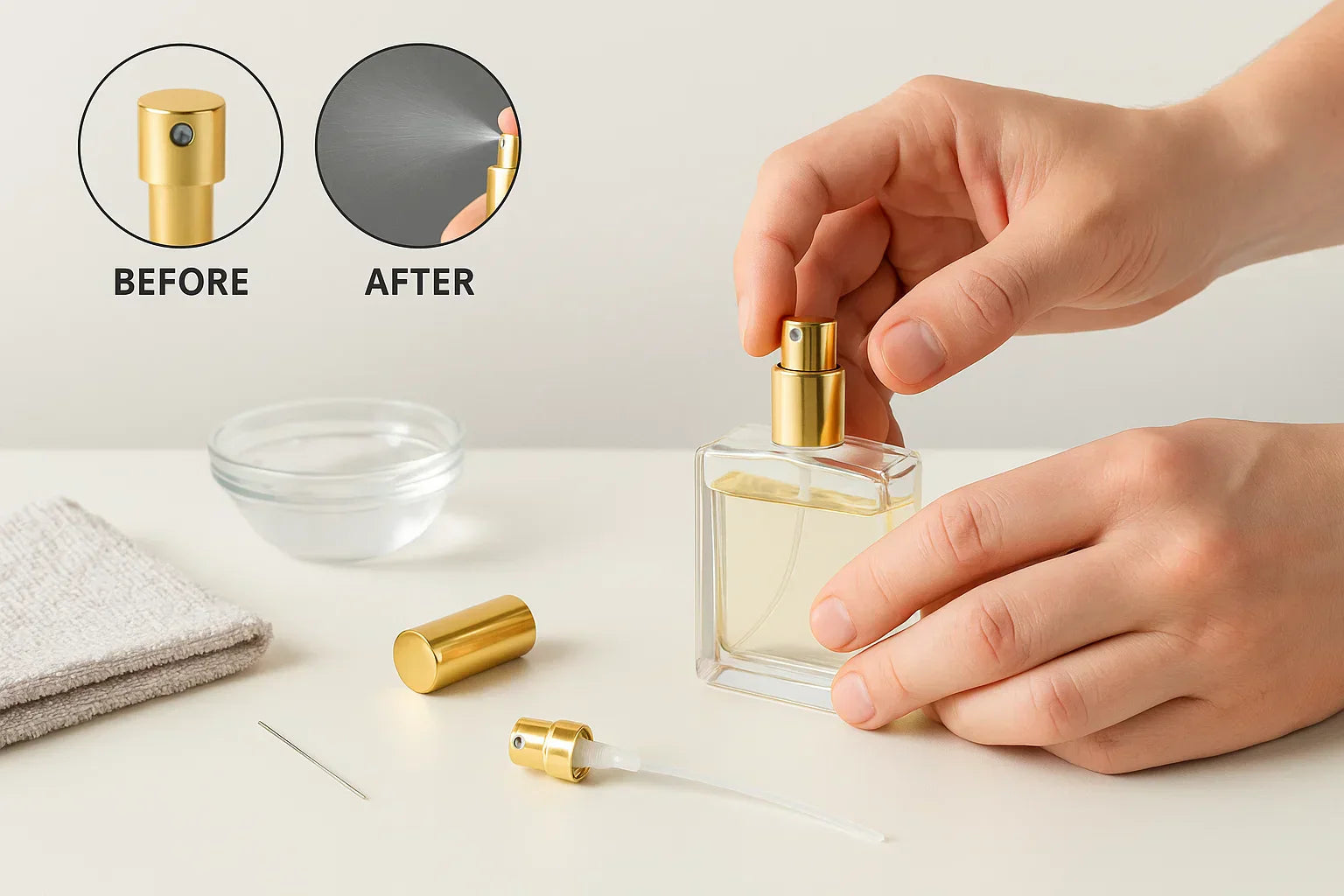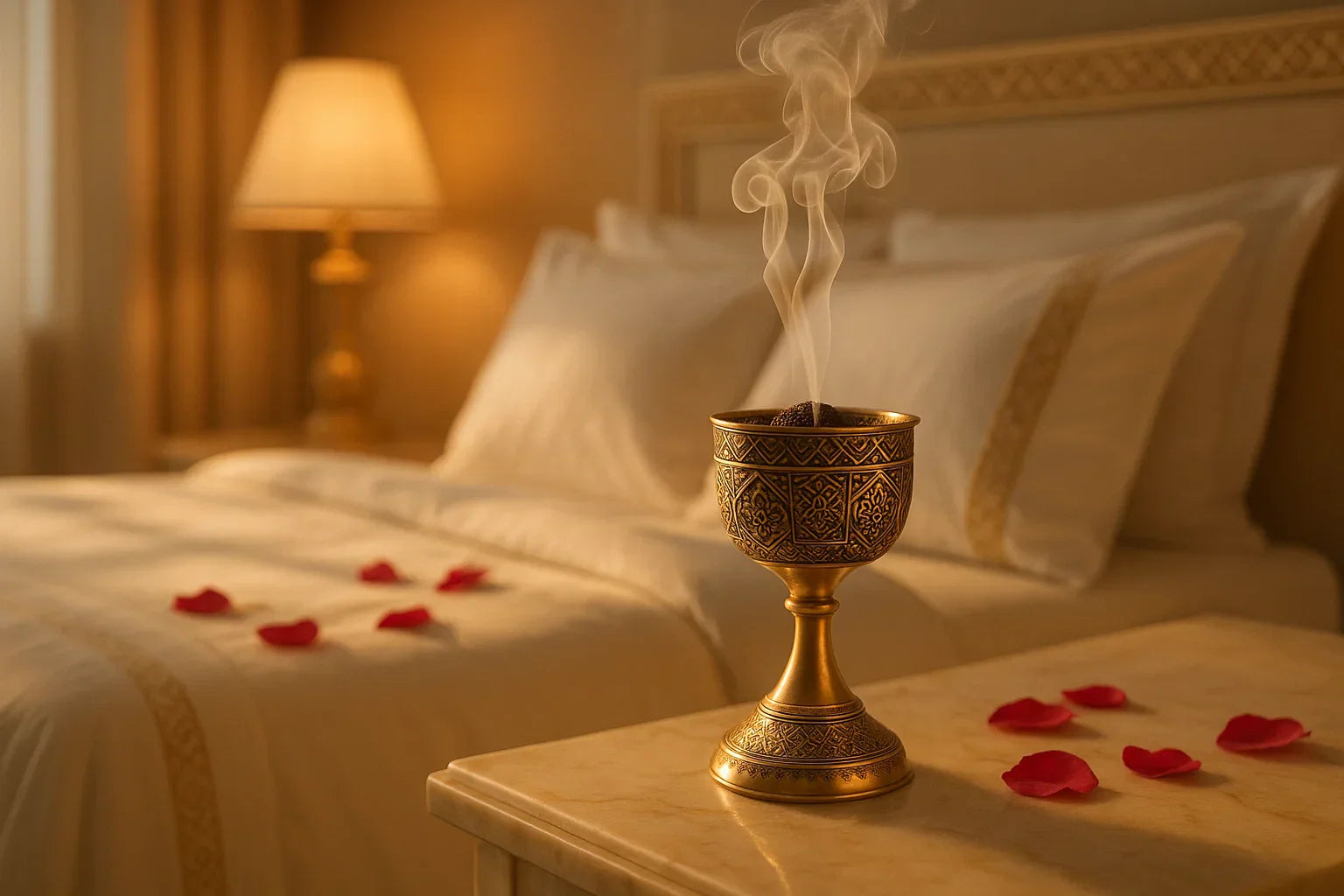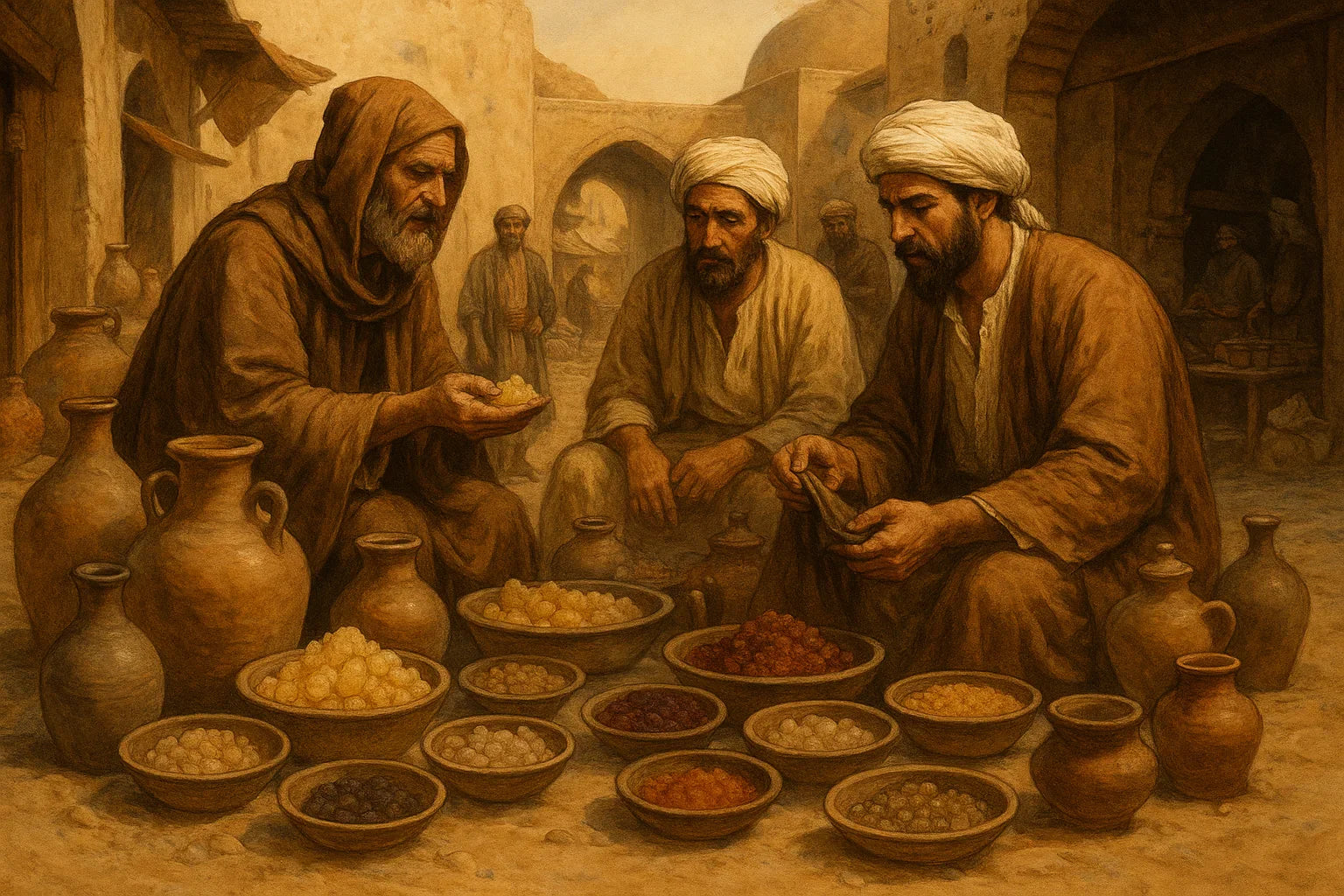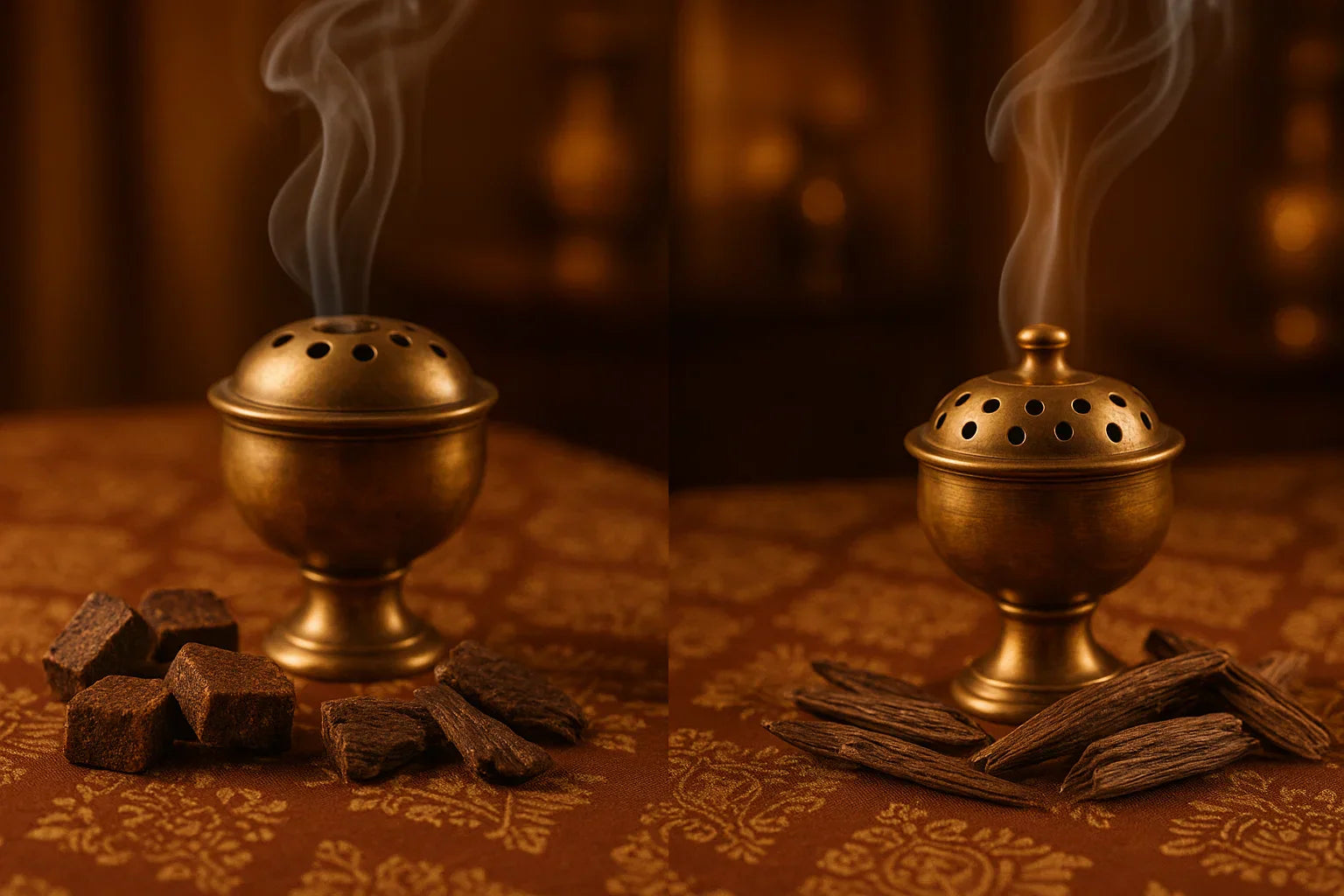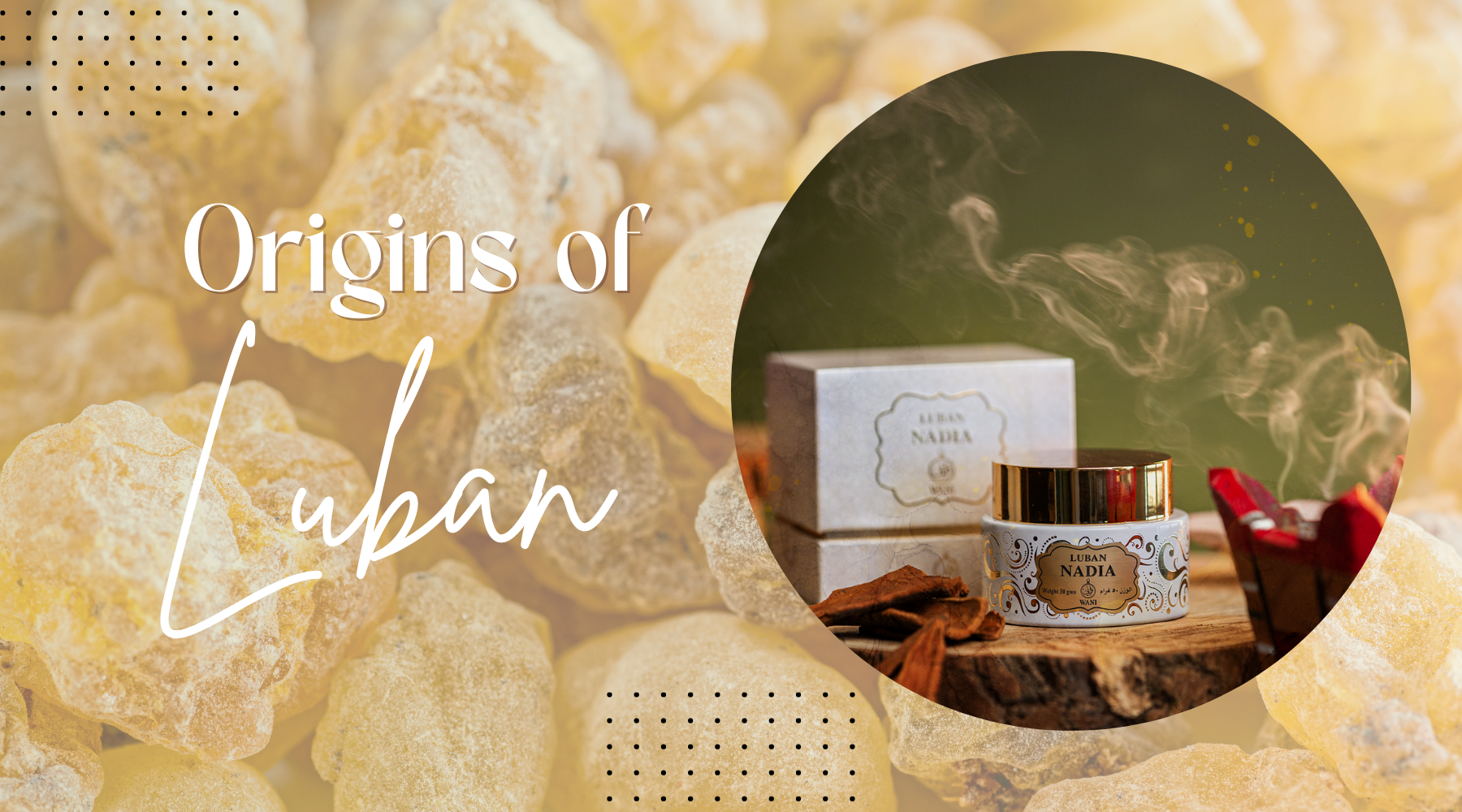
Oman's Frankincense Trail: Tracing the Origins of Luban
Oman, a country of rich cultural heritage and breathtaking landscapes, has long been celebrated for its trade and for producing exquisite commodities. One prized treasure that has captured the world's attention is Luban, also known as frankincense. Renowned for its aromatic properties and historical significance, Luban has deep roots in Omani culture and has been integral to the nation's identity for centuries. Tracing the origins of Luban in Oman unravels a captivating tale of trade, craftsmanship, and cultural significance.
In this post, Wani takes you along Oman's frankincense trail. Come, let us unravel the captivating connection behind this prized resin and the famed trade route.
1. Oman's Unique Geography
Oman's Dhofar region, located in the southern part of the country, is home to the Boswellia tree, the source of Luban. With their arid and rocky terrain, the Dhofar mountains provide the ideal conditions for these trees to thrive. It is in this rugged landscape that the magical process of harvesting Luban takes place.
2. Harvesting Luban: An age-old, meticulous craft
Since ancient ages, skilled harvesters have made small incisions in the Boswellia tree's bark, allowing the sap to ooze out slowly. Over time, the liquid hardens into small golden tears, which are carefully collected. This labour-intensive process requires expertise and patience, with traditional techniques passed down through generations. The dedication and skill of these artisans have contributed to the availability of the exceptional quality of Omani Luban.
3. Coming to the eponymous trail
Frankincense and myrrh were once highly prized from Rome to India and deemed essential for various uses ranging from religious to cosmetic to medicinal. According to Christian belief, the three wise men who travelled to Bethlehem brought frankincense, myrrh and gold as gifts for the baby Jesus. Thanks to the domestication of horses and camels, a complex trade network evolved to ferry the priceless resins from the remote valleys, where the trees grew, to the markets where kings and emperors vied for the finest grades.
The Frankincense trail describes a seaborne and caravan trade route for the two resins. It links the places where frankincense was produced - present-day Oman, Yemen, and northern Somalia with markets in the Nile valley, the Fertile Crescent, ancient Mesopotamia, Egypt, Greece, Rome, and India.
4. A trading affair that led to economic prosperity
- Seaborne trade route
The seaborne trade route of Luban connected the southern coast of Oman, particularly the region of Dhofar, with distant lands across the Indian Ocean. Dhofar's monsoon winds, known as the Khareef, were crucial in facilitating maritime trade. During the southwest monsoon season (June to September), sailors harnessed the favourable winds to navigate their dhows, traditional Omani sailing vessels loaded with Luban and other goods.
These dhows embarked on voyages to destinations such as India, Persia (modern-day Iran), the Arabian Peninsula, East Africa, and even Rome. The Luban trade fostered cultural exchanges and economic prosperity as merchants from different lands came together in vibrant port cities such as Khor Rori (Sumhuram), Al-Baleed, and Zafar.
The maritime trade route allowed the export of Luban and facilitated the importation of valuable goods like spices, silk, ceramics, and precious metals. The Omani sailors skillfully navigated the seas, establishing a formidable reputation as traders and maritime experts, enabling the growth of Oman's influence in the Indian Ocean region.
- Caravan trade route
In addition to the seaborne trade, Oman also developed an extensive caravan trade route for Luban, linking the interior regions with the coast. The caravans journeyed through the rugged landscapes of the Rub' al Khali desert, aka the Empty Quarter, to transport the precious resin to the ports.
The caravans were composed of skilled merchants, known as barqis, and their camel caravans laden with Luban and other valuable commodities. These treacherous journeys across the desert required meticulous planning, knowledge of water sources, and protection against raiders. Caravan routes, such as the Incense Road, connected Oman with cities like Ubar (the fabled Atlantis of the Sands), Shisur, and Shannah.
The caravan trade route provided inland regions, including the historic cities of Nizwa and Bahla, with economic prosperity, as they served as important trading hubs and centres for storing and distributing Luban. These trade routes connected Oman with neighbouring lands and extended its influence deep into the Arabian Peninsula and beyond.
5. Evolution and decline of the trail
The trail had various branches and routes, depending on the time period and the specific traders involved. Passing through Shisr (Ubar), Al-Balid, and Shabwah in Yemen, the trail branched out in different directions, with some routes crossing the Red Sea by boat and continuing along the coast of modern-day Saudi Arabia, Jordan, and Israel. Other routes went eastward through Oman, connecting with the Persian Gulf and the Indian Ocean trade network.
Over time, the Luban trade played a significant role in shaping the economies and cultures of the civilizations along the route. It fostered the development of prosperous trading cities and kingdoms, which benefited from controlling and taxing the trade. The trail also facilitated the exchange of goods, ideas, and cultural influences between the Arabian Peninsula and the Mediterranean world.
However, with the Roman Empire's decline and the rise of new trade routes like the Silk Road, the importance of the Frankincense Trail as a way to sell luban diminished. By the medieval period, the trail had largely fallen out of use.
Today, remnants of the Frankincense Trail can still be found in ancient ruins, archaeological sites, and historical artefacts. Some sections of the trail have been recognized as UNESCO World Heritage Sites, preserving their cultural and historical significance. The trail serves as a testament to the rich history of cultural exchange and trade in the ancient world. It continues to attract tourists and researchers interested in exploring its legacy.
But that's not to say about Luban!
6. Luban's cultural significance: beyond trade
Beyond its economic value, Luban carries deep cultural significance in Oman. Since the earliest times, it has been an integral part of religious ceremonies and rituals for centuries. The burning of Luban as incense symbolizes purification, spirituality, and a connection to the divine. Its captivating fragrance fills the air, creating an atmosphere of tranquillity and serenity.
7. Luban's therapeutic properties: nature's gift
Luban is not just a fragrant resin but is also renowned for its therapeutic properties. In traditional Omani medicine, it has been used to address various ailments, including respiratory issues, digestive disorders, and skin conditions. The healing qualities of Luban have gained global recognition and continue to be valued in alternative and holistic healing practices.
8. A growing popularity of Luban
The global demand for Luban continues to grow, driven by its historical significance, cultural appeal, and therapeutic properties. The frankincense trade has become essential to Oman's economy, contributing to the nation's growth and development. By combining traditional practices with modern innovation, Oman is able to meet the market's evolving needs while preserving the authenticity and integrity of its Luban production.
However, as with any natural resource, sustainability and conservation are crucial considerations. In collaboration with local communities and environmental organizations, the Omani government has implemented measures to ensure the responsible harvesting and management of the Boswellia trees and to preserve this invaluable natural heritage.
Tracing the origins of Luban in Oman not only uncovers a remarkable historical narrative and highlights the deep-rooted connection between a nation and its natural resources. Luban serves as a testament to Oman's cultural identity, resilience, and commitment to preserving its traditions. As the fragrance of frankincense continues to captivate hearts and minds worldwide, the enchanting story of Luban in Oman will endure, creating a lasting legacy for generations to come.
—-
We hope this post sheds a spotlight on how the origin of Luban is weaved through time with the Frankincense Trail. If you are someone who enjoys the sweet fragrance of this product, we highly encourage you to explore our Luban collection.



